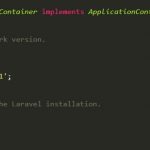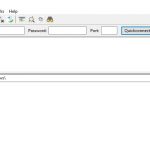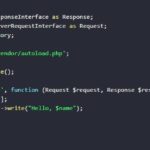You’re in the zone, coding away or browsing your favorite website, when suddenly, a pesky little dialog box pops up, throwing cryptic numbers and letters in your face.
Welcome to the world of error codes—a set of alphanumerical values that can cause confusion, irritation, but also, guidance. But what exactly is an error code, and why should you care?
- “Invalid Magic Number” and “You need to load the kernel first” Errors During Linux Installation

- How to Bulk Delete All Youtube Watch Later Videos

- Windows Update Error 0x800f0805

- Fix Unarc.dll Error Codes While Installing Games
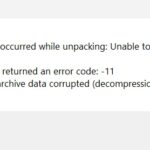
- What is the 403 Error Code?
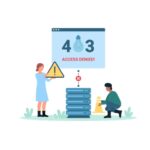
- What is the “t” App that Prevents Windows from Restarting?

- Fix Steam Error Code 105
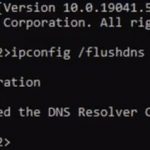
- Fix: script.ps1 Cannot Be Loaded Because Running Scripts Is Disabled on This System
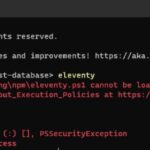
- How to Fix Black Screen Issues on Android Phones

- How to Fix the Windows Update Error 0x80240009?

- How to Fix “XULRunner Error Platform Version is not Compatible”
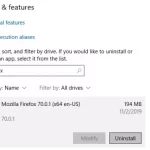
- How to Fix Error E200 on Xbox One
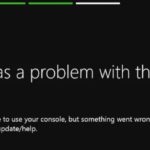
- Common Causes of Socket Error 10054 and How to Fix
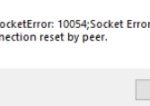
- What Are the Common Causes of Socket Error 10061 and How to Fix?

- What Are the Common Causes of Socket Error 10051?
- How to Fix “Google Play Authentication Is Required” Error
- What is HTTP 404 Error?

- Fix Google Chrome profile error occurred error
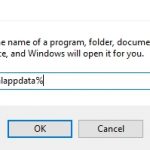
- Fix Java error message “Reached End of File While Parsing”
- 7 Ways to Fix Google Chrome Crashing, Freezing or Not Responding
- 4 Ways to Fix “Unfortunately App Has Stopped” Error on Android
Table of Contents
What is an Error Code?
In essence, an error code is a unique sequence of numbers, letters, or a combination of both, generated by software or a system to signal that something isn’t quite right. It’s akin to your car’s “Check Engine” light: not a detailed diagnostic, but a heads-up that you need to dig deeper. These codes act as shorthand messages, allowing for quick identification of issues without the need for lengthy error descriptions.
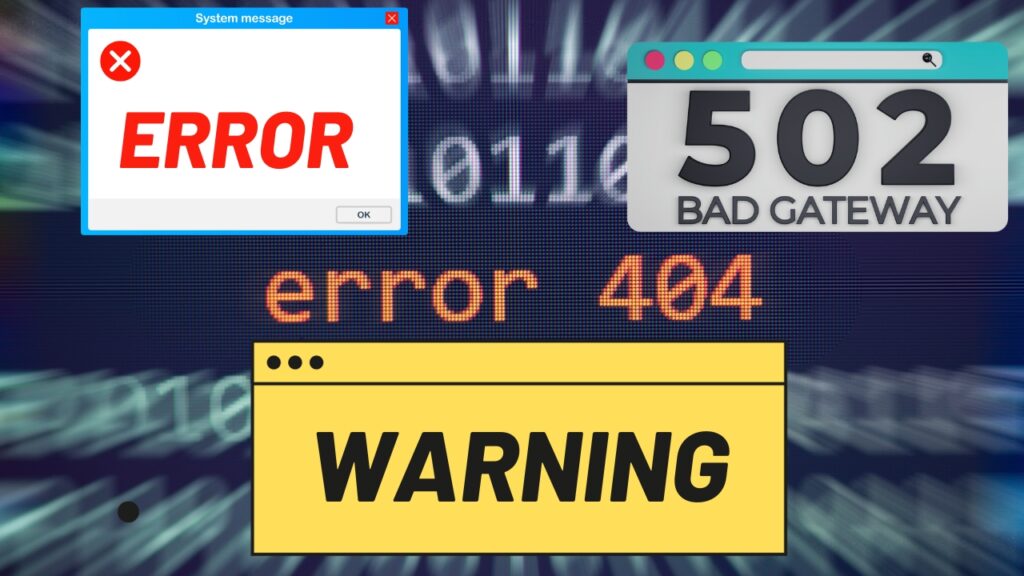
To give you an idea of why error codes exist, let’s jump back in time. In the early days of computing, system resources were limited. Comprehensive textual error messages would take up precious memory and processing power. Hence, developers came up with an economical solution: error codes.
These codes, usually short and to the point, served as pointers that could be cross-referenced with documentation to understand what went wrong.
Error Code Examples
HTTP Error Codes
- 404 Not Found: The requested resource couldn’t be found on the server.
- 500 Internal Server Error: Something went wrong on the server’s end.
- 403 Forbidden: You don’t have the permissions to access a particular resource.
- 401 Unauthorized: You need to authenticate before accessing the resource.
Windows Error Codes
- 0x80070005: Access Denied.
- 0x80004005: Unspecified error, often related to permissions or missing DLL files.
- 0xC000021A: Fatal System Error, often requiring a system restart.
Mac Error Codes
- -36 ioErr: I/O Error (Disk read/write issue).
- -50 paramErr: Error in a user parameter list.
- -43 fnfErr: File not found.
Linux Error Codes
- Segmentation fault (core dumped): Memory access violation.
- Permission denied: Insufficient permissions to execute an action.
- No such file or directory: The system can’t find the specified file or directory.
SQL Error Codes
- 1064: Syntax error.
- 1146: Table doesn’t exist.
- 1045: Access denied for a user.
Game Consoles (e.g., PlayStation, Xbox)
- PS4 Error CE-34878-0: Application has crashed.
- Xbox Error 0x87DD0006: Sign-in issues.
Car Error Codes (OBD-II)
- P0300: Random/Multiple Cylinder Misfire Detected.
- P0420: Catalyst System Efficiency Below Threshold.
- P0171: System Too Lean.
Household Appliances
- E01: Often indicates a water supply issue in washing machines.
- F01: Typically a heating issue in ovens.
- CL: Child lock is activated on the appliance.
Error Code Categories
Today, error codes have transcended the realm of computers and software. You’ll find them in household appliances, car dashboards, and even on industrial machinery.
In a sense, they’ve become a universal language of dysfunction, signaling to us that something needs our attention.
Starting with the familiar, there are those error codes that have become universally accepted standards. For example, HTTP error codes like “404 Not Found” or “500 Internal Server Error” are the lingua franca of web issues.
These are the Latin phrases of the digital realm; regardless of the browser, device, or operating system you’re using, these codes mean the same thing.
They’re the standardized markers that help both end-users and tech professionals diagnose what’s happening in a shared context.
On the flip side, you have error codes that are more like local dialects, unique to a particular software or system. For example, you play a video game and get an error code that is specific only to that game.
Unless you’re familiar with that game’s community or have its user manual handy, deciphering that code could be a challenge.
These are not your every day “404s”; these are specific red flags that make sense only within a particular context.
Certainly, error codes can be grouped into various categories based on the systems they pertain to, their severity, or the type of issue they signify. Classifying them this way can help streamline your troubleshooting process.
By Systems
- Web-Based (HTTP) Errors: These error codes usually start with a number like 4xx or 5xx and indicate issues with web servers or client-server interaction.
- Operating System Errors: These are specific to the operating system you’re using, like Windows, macOS, or Linux, and can come in the form of numbered codes or text-based messages.
- Database Errors (SQL): These are typically numerical and indicate problems with queries, table structures, or data manipulation.
- Hardware Errors: These can come from your PC, peripherals, or even household appliances and cars. They could be numeric codes, blinking LED patterns, or even text messages on a display panel.
- Game Console Errors: Specific to platforms like Xbox, PlayStation, or Nintendo, these codes usually indicate issues with connectivity, hardware, or software compatibility.
By Severity
- Informational Codes: These aren’t necessarily errors but give you additional information. For instance, HTTP 100 series codes provide information about the server’s capabilities.
- Warning Codes: These indicate a potential issue that might not stop a program from running but could lead to errors down the line.
- Critical/Fatal Errors: These indicate severe issues that halt the current operation and may require immediate attention. For example, Windows’ Blue Screen of Death (BSOD) errors.
By Issue Type
- Network Errors: These codes signify problems related to internet connectivity, DNS resolution, or other networking issues.
- Permission Errors: These codes pop up when an unauthorized action is attempted, such as accessing a restricted file.
- Syntax and Validation Errors: Seen often in coding and database environments, these errors occur when there’s an issue with the command structure or data validation.
- System Resource Errors: These relate to limitations in system resources, such as memory, CPU usage, or disk space.
- Data Errors: These errors occur when there’s an inconsistency or corruption in the data being processed. This could happen in databases, file systems, or even during data transmission.
Why Understanding Error Codes Matters
You might think of an error code as a nuisance, but it’s actually quite useful.
The Regular User’s Best Friend
For the everyday user, an error code is your initial clue on how to fix what’s bugging your system. Sure, you might not be a tech wizard, but that’s the beauty of it.
You don’t have to be. Plug that error code into a search engine, and you’ll find a plethora of step-by-step fixes. It’s as if you have an entire community of people who’ve faced the same issue, and they’re all sharing their wisdom to help you out.
Debugging Made Easier for Pros
Now, let’s switch gears and talk about the pros—developers and IT experts. For them, an error code is like a breadcrumb trail in a forest. In complex systems, identifying the root cause of an issue can be like searching for a needle in a haystack.
An error code narrows down the possibilities, guiding them toward the specific part of the system where the issue originated. This is invaluable, especially in time-sensitive situations where every minute counts.
Standardization Across Platforms
Error codes aren’t just a Windows thing; they’re common across various software platforms and even hardware. This standardization makes it easier for both users and professionals to quickly understand what’s going wrong, regardless of the specific technology they’re using. It’s like a universal language for troubleshooting.
Better Communication Among Teams
Another perk? When IT pros and developers are working together—say, on a big project—an error code gives everyone a common reference point. It enhances communication and teamwork.
No need for long-winded explanations; a simple error code can sum up the situation and let everyone get straight to brainstorming solutions.
The Yin and Yang of Error Codes
However, it’s not all sunshine and rainbows. Error codes have their drawbacks too.
You might get a “403 Forbidden” but still have no clue about what specifically is off-limits. Is it a permission issue, a geographical restriction, or something else entirely?
Another pain point is that error codes can often be outdated or poorly documented. If you’ve ever found yourself digging through forum threads from 2011 trying to decode an error, you know what I’m talking about.
The disconnect between an error code and its accompanying documentation can sometimes lead you on a wild goose chase.
So, how do you strike a balance between the guiding light and the rabbit hole that error codes can be?
- Always cross-reference your error codes with multiple sources, if available. This could be official documentation, community forums, or tech blogs. Multiple perspectives help you triangulate a more accurate solution.
- Consider using debugging tools or logs to gain more context for the error. These can provide real-time insights that are more specific than a generic error code.
- Don’t hesitate to lean on the community. While error codes can sometimes be misleading, the collective wisdom of developers and tech enthusiasts often fills in the gaps. After all, someone else has probably faced the same issue and might have found a workaround or solution.

